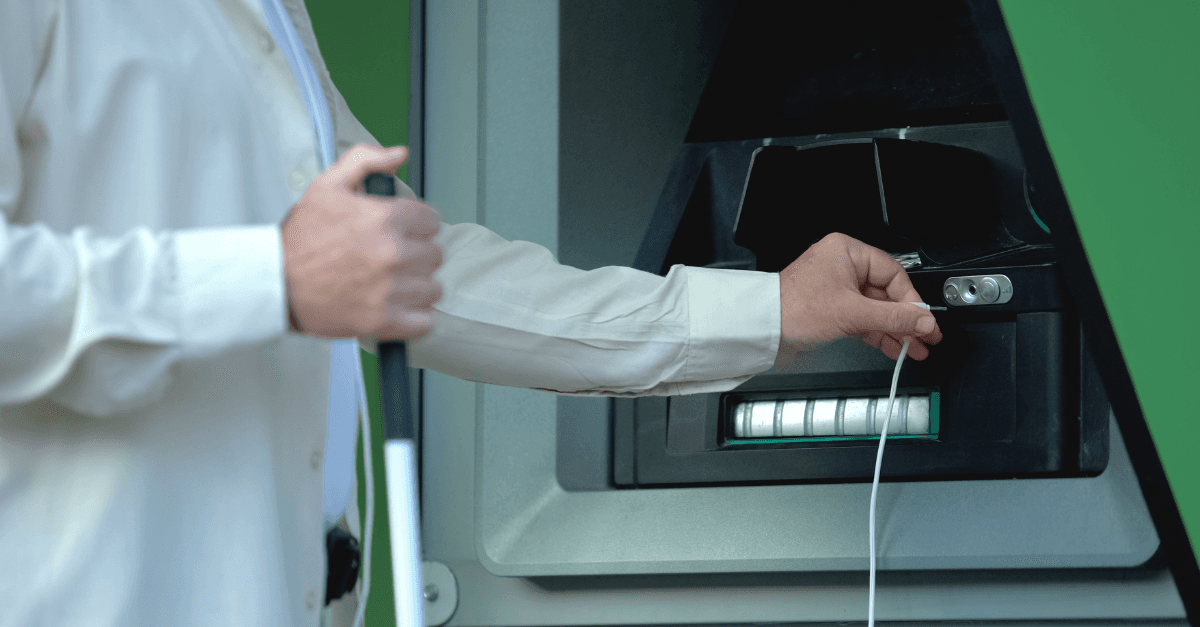The European Accessibility Act (EAA) is a game-changer for businesses operating within the European Union. Enacted to enhance accessibility for people with disabilities, this directive (EU 2019/882) mandates that essential products and services such as ATMs, banking software, e-commerce platforms, and self-service kiosks must be designed with inclusivity in mind.
Companies must ensure their digital and physical customer touchpoints are compliant before the June 28, 2025 deadline. Non-compliance could result in legal penalties and loss of business opportunities. This article breaks down what the EAA entails, common FAQs, and key strategies businesses should adopt for compliance.
What is the European Accessibility Act?
The European Accessibility Act (EAA) is a regulatory framework introduced by the European Union to standardize accessibility requirements across member states. It applies to key areas such as:
Self-service terminals (ATMs, ticketing machines, self-checkouts)
Banking and financial services
E-commerce platforms and digital marketplaces
Public transport services
Telecommunications and emergency services
Smartphones, computers, and digital software
This directive ensures that individuals with disabilities can independently access and interact with these services using assistive technologies, such as screen readers, braille displays, and alternative navigation methods.
Key EAA Compliance Requirements for Self-Service Devices
Businesses that operate self-service terminals—such as ATMs and self-checkouts—must implement several accessibility enhancements to comply with the EAA. Here are the most critical updates made to the KIXCustomer Standard-GUI to align with EAA regulations:
1. EPP Navigation for Enhanced Accessibility
Many self-service terminals rely on touchscreen interactions. The EAA requires that customers with limited manual reach or dexterity (e.g., wheelchair users) can operate the device using alternative input methods.
Solution: The EPP (Encrypting PIN Pad) Navigation feature allows users to perform all essential functions using physical EPP buttons rather than relying on touchscreen input.
Example: Customers can now select banknote denominations for withdrawals using a numeric keypad instead of tapping a touchscreen.
2. High-Contrast Mode for Visually Impaired Users
Standard user interfaces often lack the contrast required for low-vision users.
Solution: A new high-contrast mode has been implemented, offering:
Larger fonts using the "Atkinson Hyperlegible" typeface.
Color-adjusted buttons to meet WCAG AA/AAA contrast standards.
Easily toggleable contrast modes (black-on-white or white-on-black) via a dedicated key.
3. Audio Navigation & Text-to-Speech (TTS)
For blind or low-vision users, self-service kiosks must provide auditory feedback.
Solution: A built-in Text-to-Speech (TTS) system now reads out instructions in both German and English.
Functionality:
Users can control speech speed using the EPP keypad.
When headphones are plugged in, on-screen elements automatically disappear to protect privacy.
4. User Inactivity Handling
Customers who take longer to interact with self-service machines should receive clear alerts before a session times out.
Solution: A visual and auditory warning appears 10 seconds before a timeout. Users can extend their session by pressing any button or tapping the screen.
5. T9-Style Keypad Input for Text Fields
Users who are blind or have motor impairments may struggle with on-screen keyboards.
Solution: A T9-style input system has been added to allow users to type names, IBANs, and transaction details using the physical numeric keypad.
6. Adjustable Volume and Speech Speed
Individuals with hearing impairments or cognitive disabilities require customized audio settings.
Solution: Users can adjust both volume and speed of spoken instructions using keypad shortcuts.
7. Data Privacy Protection with Headphones
EAA mandates that accessibility features must not compromise user privacy.
Solution: When headphones are inserted:
The screen content is automatically hidden.
Only audio instructions are provided to protect sensitive information.
Frequently Asked Questions (FAQs) about the EAA
1. Who Needs to Comply with the EAA?
All businesses operating in the EU market, including retailers, banks, and software providers offering self-service technology. Even non-EU companies must comply if they sell or provide services within the EU.
2. What Happens if My Business is Not Compliant?
Failure to meet EAA standards by June 2025 can lead to:
Fines and legal actions imposed by EU authorities.
Loss of market access (non-compliant products/services may be banned).
Reputation damage, as accessibility and inclusivity become key differentiators for brands.
3. Are There Specific Technical Standards for Compliance?
Yes, the EAA aligns with the Web Content Accessibility Guidelines (WCAG 2.2) and EN 301 549, the EU’s standard for ICT accessibility.
4. How Can Businesses Prepare for the EAA?
Conduct an accessibility audit of existing self-service kiosks.
Upgrade software to support keyboard navigation, high-contrast modes, and audio feedback.
Train customer support teams to assist disabled users.
Work with accessibility consultants to test interfaces with real users.
5. Does the EAA Apply to Mobile Banking Apps and Websites?
Yes! All banking apps, e-commerce platforms, and online services must be accessible for users with disabilities.
Conclusion: The EAA is an Opportunity, Not Just a Regulation
Rather than viewing the European Accessibility Act as a compliance burden, businesses should embrace it as an opportunity to create more inclusive, user-friendly experiences. Companies that proactively optimize their self-service interfaces for all users will gain a competitive advantage, foster customer loyalty, and future-proof their technology.
By implementing EPP navigation, high-contrast modes, TTS, and enhanced privacy controls, businesses can ensure they meet compliance deadlines while also offering a seamless user experience to millions of differently-abled customers across the EU.
Sources
The information in this article is based on official European Union legislation, industry best practices, and compliance documentation from KIXCustomer Standard-GUI. Below are the key references used:
European Accessibility Act (EAA) - EU Directive 2019/882
Official legislation outlining accessibility requirements for self-service terminals, banking services, e-commerce, and public transport.
Web Content Accessibility Guidelines (WCAG 2.2)
The global standard for digital accessibility, referenced in the EAA to ensure compliance with best practices for contrast, screen readers, and input alternatives.
WebAIM Contrast Checker (For UI Compliance Testing)
Online tool for testing color contrast ratios to meet accessibility standards.
EN 301 549 - European ICT Accessibility Standard
The EU’s technical standard for digital accessibility, governing hardware and software compliance across industries.

